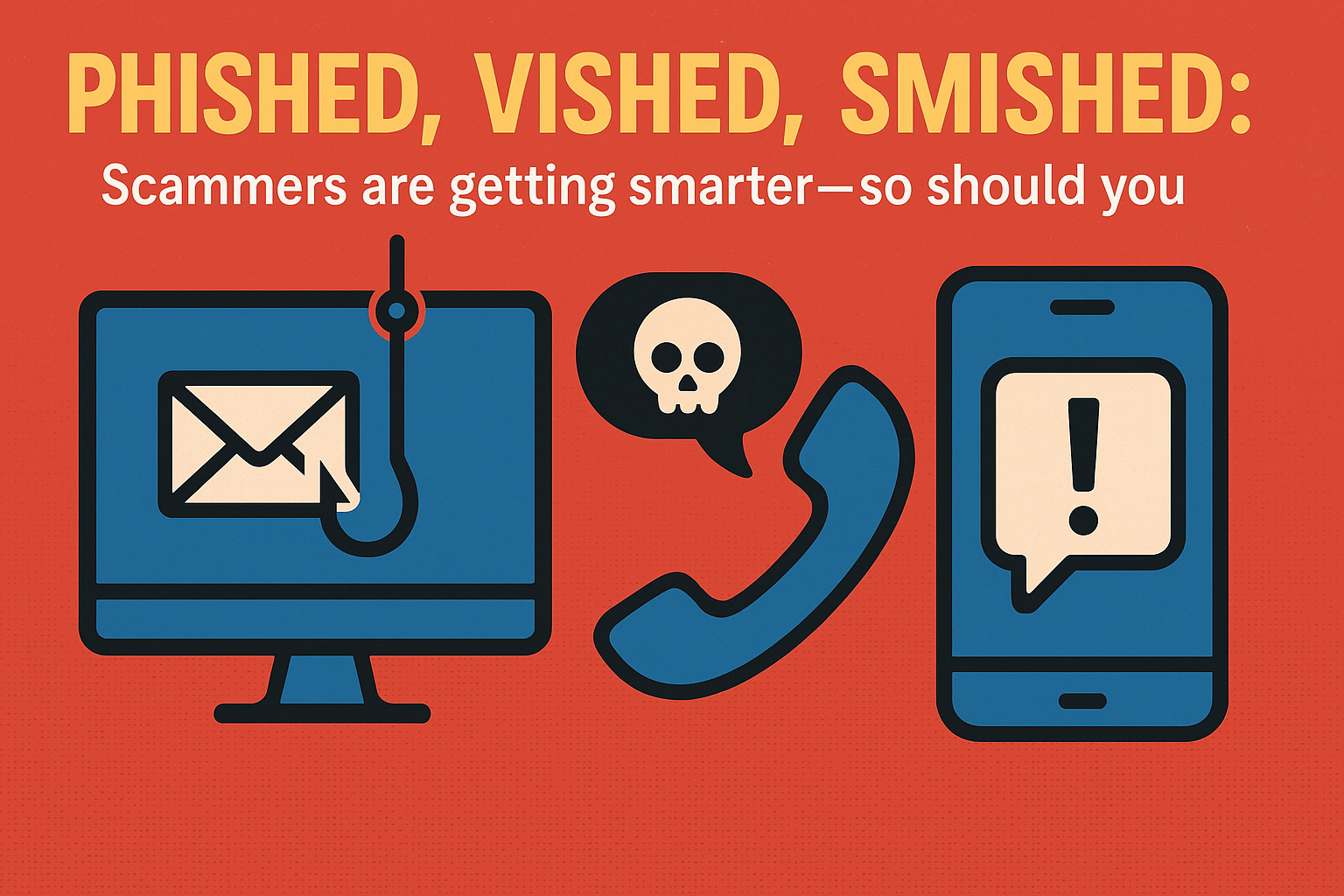Phished, vished, smished: Scammers are getting smarter—so should you
The email looks official. The caller sounds professional. The text message seems routine. But behind the slick formatting and the familiar tone, a digital predator is waiting.
Across the globe, a new wave of cyber fraud is blending old-school scam tactics with sophisticated psychological tricks and tech mimicry. From phishing emails to fake reward texts and social engineering phone calls, fraudsters are evolving—and targeting more victims than ever.
Yet while the scams have become smarter, so can you.
The new face of old tricks
Many of today’s most successful frauds aren’t revolutionary. They’re decades-old schemes re-engineered for the digital age. The difference? They now look like your bank, sound like your telecom provider, and read like your favorite app.
These attacks aren’t just increasing in frequency—they’re increasing in fidelity. Scammers are mimicking the tone, style, and systems of legitimate institutions with uncanny precision.
Here’s a breakdown of how today’s frauds work—and what you can do to keep your guard up.
Phishing 2.0: You’ve got (Fake) mail!
Phishing remains a scammer favorite—mainly because it still works. You receive an email, seemingly from your bank, asking you to verify your account. You click a link, enter your credentials, and just like that, you’ve handed over the keys.
Counter it:
▪️Never click links from unsolicited emails.
▪️Enable multi-factor authentication (MFA).
▪️Change compromised passwords immediately—and never reuse them.
▪️Report the incident to your bank’s fraud department.
Vishing: The voice scam disguised as customer service
Fraudsters now call victims while posing as bank representatives. The pitch? You’ve got unclaimed reward points you can convert to cash. The catch? They need your one-time password (OTP)—and that’s all it takes to drain your account.
Stay alert:
▪️No legitimate bank will ever ask for your OTP.
▪️Hang up and call your bank using the official phone number on your card or their website.
Smishing: Texts that steal
Smishing—SMS phishing—is on the rise. You get a text that looks like it came from your telecom provider, claiming you’ve won a prize or reward. The message links to a polished but fake site that asks for your card details and OTP.
Protect yourself:
▪️Never click on unfamiliar links in texts.
▪️Always double-check what the OTP message is for before using the code.
Account takeovers: Social media as a weapon
Scammers scrape personal information from your social media—birthdays, pet names, favorite sports teams—to bypass security questions. Once in, they change your passwords, update your account info, and lock you out.
Mitigation strategies:
▪️Use strong, unique passwords for every account.
▪️Tighten your social media privacy settings.
▪️Avoid sharing sensitive personal information publicly.
▪️Enable real-time transaction alerts from your bank.
A game of cat and mouse
As banks and tech companies deploy stronger defenses, fraudsters are escalating their methods. The result: an arms race that demands constant vigilance from consumers.
As the late Kevin Mitnick—a convicted hacker turned cybersecurity consultant—once said: “The weakest link in the security chain is the human element.” But it’s also where the most potential lies. Informed users are the hardest to fool.
The good news? Most scams rely on trickery, not technical mastery. Spotting a red flag—an odd-looking link, an unexpected OTP request, a too-good-to-be-true offer—can be enough to stop a scam cold.
In a digital economy, awareness is your strongest currency. Spend it wisely.



0 Comment